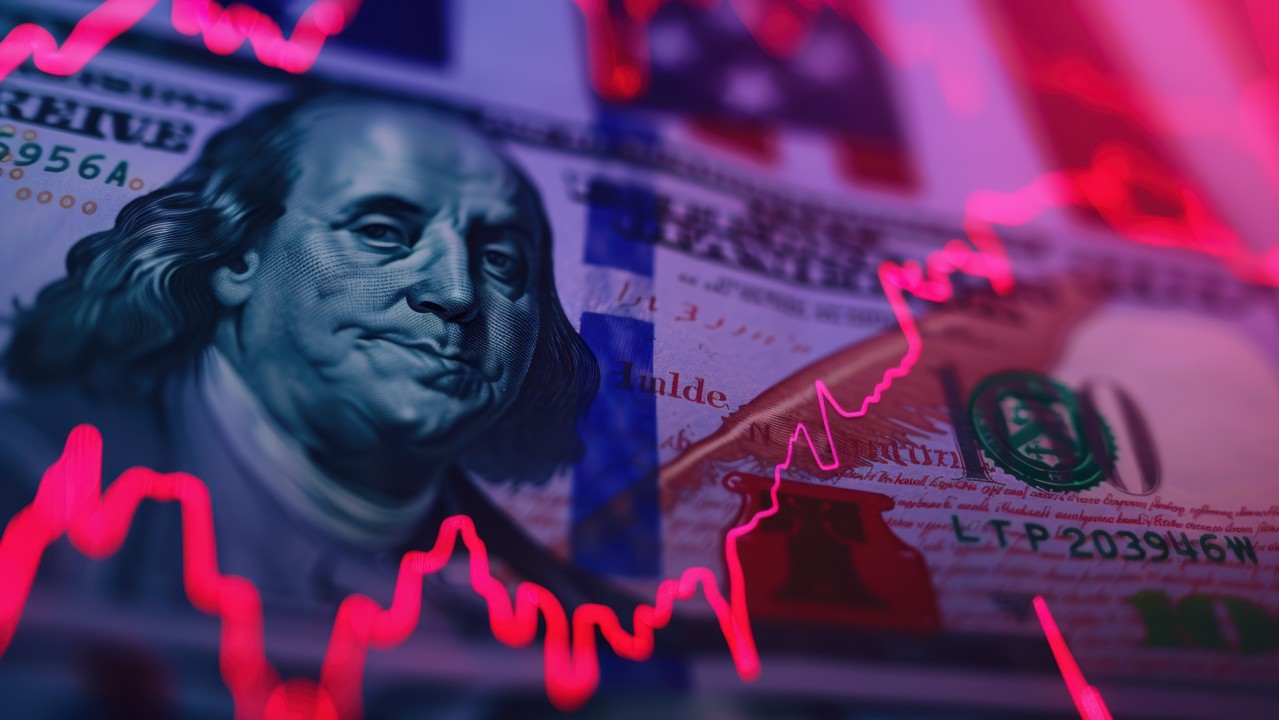In the spring of 2025, the global financial narrative is shifting once again toward the volatility of emerging markets. With the U.S. Dollar Index (DXY) rising sharply—recently breaching the 108 mark, a level not seen since 2022—emerging economies are once more facing the pressures of capital flight, weakening currencies, and policy dilemmas. Emerging market economies are under pressure in 2025 as the U.S. dollar strengthens, driving capital flight outflows and weakening currencies in countries. Explore the data, causes, and expert insights.
For countries like Brazil, South Africa, and Turkey, this dollar rally is more than a currency issue—it’s a matter of fiscal stability, investor confidence, and inflation management. While some are better prepared than in past cycles, the speed and scale of capital outflows are reviving concerns about economic fragility in the face of a strong greenback.
In this article, we’ll examine the data driving the dollar surge, look at how emerging markets are responding, analyze regional currency movements, and feature insights from global procurement strategist Mattias Knutsson on how businesses should react to this economic shake-up.
What’s Driving the U.S. Dollar Strength in 2025?
Several interconnected factors are pushing the dollar higher in Q2 2025:
- Persistent U.S. economic resilience: With GDP growth at 2.6% YoY, the U.S. economy remains a magnet for global investment.
- Hawkish Fed policy: Despite easing inflation (3.1% YoY), the Federal Reserve has maintained elevated interest rates at 5.25%, citing geopolitical risks and wage growth.
- Safe-haven flows: Ongoing trade tensions with China, the Russia-Ukraine conflict, and instability in the Middle East are pushing investors toward dollar-denominated assets.
Dollar Index Movement (2024–2025)
| Month | DXY Value |
|---|---|
| Jan 2024 | 101.2 |
| Jul 2024 | 104.6 |
| Dec 2024 | 106.0 |
| Mar 2025 | 107.5 |
| May 2025 | 108.2 |
Impact on Emerging Markets: Currency Slide and Capital Flight
A stronger dollar makes debt repayments in emerging markets more expensive (especially dollar-denominated debt), while also triggering risk aversion in global capital markets. The result? Outflows from EM equities, bonds, and real assets.
Currency Depreciation Snapshot (YTD 2025)
| Country | Currency | YTD Depreciation (%) |
|---|---|---|
| Brazil | Brazilian Real (BRL) | -7.9 |
| South Africa | South African Rand (ZAR) | -9.4 |
| Turkey | Turkish Lira (TRY) | -11.2 |
| Argentina | Argentine Peso (ARS) | -16.8 |
| Indonesia | Indonesian Rupiah (IDR) | -4.3 |
Capital Outflows (Q1–Q2 2025 Estimate)
- Brazil: $6.3 billion
- South Africa: $4.1 billion
- Turkey: $7.8 billion
- Mexico: $3.7 billion
Economic and Political Fallout
Brazil:
- Inflation is climbing to 5.8%, driven by rising import costs.
- Central bank raised rates from 10.75% to 11.5% to stabilize the real.
- President Lula’s administration is considering capital controls amid bond selloffs.
South Africa:
- Unemployment remains high at 31.2%, and the weaker rand is raising food and energy prices.
- Investor sentiment is shaken by ongoing power grid instability.
Turkey:
- Inflation is back at 47%, fueled by the lira’s collapse.
- The Erdogan government continues controversial rate cuts despite investor backlash.
These economic shocks risk amplifying social unrest and reducing foreign direct investment (FDI).
Emerging Markets vs Historical U.S. dollar Cycles
This isn’t the first time EMs have been on the back foot due to a strong dollar. Previous episodes include:
- 1997–98 Asian Financial Crisis
- 2013 Taper Tantrum
- 2022 Inflation Shock
But 2025 is different. EMs have stronger FX reserves and better debt ratios. However, the synchronized nature of current outflows and geopolitical complexity pose new challenges.

What Central Banks Are Doing
Most EM central banks are responding with a mix of rate hikes, FX interventions, and forward guidance:
- Brazil: Selling dollar reserves to support BRL
- South Africa: Emergency rate hike of 100 basis points
- Turkey: Continued FX swaps and backdoor measures
- India & Indonesia: Preemptive currency hedging and sovereign bond buybacks
Still, these are short-term stabilizers—not structural solutions.
Investor Behavior and Reallocation
Institutional investors are moving toward:
- U.S. Treasury Bonds (10-year yields remain above 4.6%)
- Gold (up 9.2% YTD)
- Developed market equities with dollar exposure
Procurement and Trade Impact: Insights from Mattias Knutsson
Mattias Knutsson, Strategic Leader in Global Procurement and Business Development, believes this currency volatility demands immediate attention from global supply chain leaders.
“Procurement leaders cannot operate on autopilot. A stronger dollar might mean cheaper imports for U.S. firms, but it creates chaos in supplier nations. Margins, contracts, and delivery guarantees are all at risk.”
He emphasizes the importance of:
- Multi-currency procurement contracts
- Local sourcing strategies to bypass FX volatility
- Flexible supplier agreements tied to inflation indices
“If your supplier in Turkey or Brazil suddenly faces a 10% currency loss, expect renegotiations or delays. Strategic agility is not optional—it’s survival.”
Knutsson also advocates for building FX scenario modeling into supply chain tools.
Conclusion:
The U.S. dollar renewed strength is reordering the financial and economic map for 2025. While investors in developed markets may find shelter in the greenback, emerging economies are once again caught in a spiral of inflationary pressure, policy conundrums, and dwindling capital.
For countries like Brazil, South Africa, and Turkey, this is a stress test of economic governance, fiscal discipline, and central bank credibility. And for global businesses, this moment highlights the importance of FX-aware procurement strategies, diversified sourcing, and macroeconomic vigilance.
Mattias Knutsson puts it plainly:
“When the U.S. dollar roars, emerging markets tremble. But smart companies don’t freeze—they reframe. The winners will be those who build currency resilience into their DNA.”In a world of shifting tides, adaptability remains the best currency of all.





